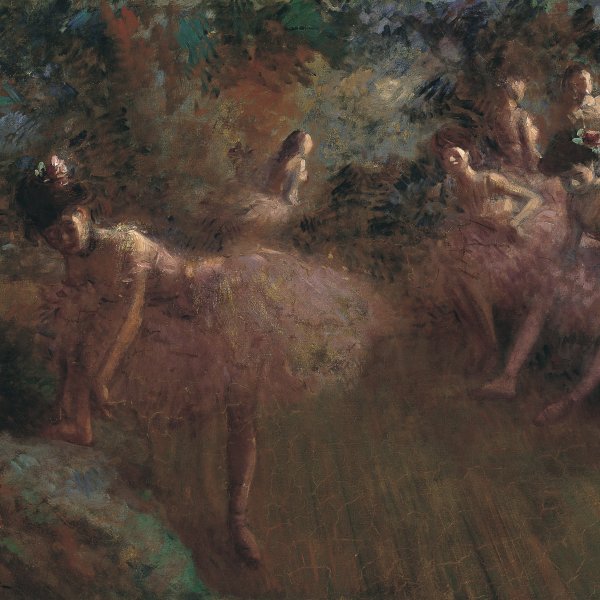Jean-Louis Forain
The youngest of the group of Impressionist painters, Forain is also famous for his satirical drawings, which he presented to the press over a period of almost fifty years. Born in Reims in 1852 to a modest family of artisans, he moved to Paris at the age of eleven and stayed there until his death in 1931.
Essentially self-taught, he was noticed at the Louvre by the sculptor Carpeaux, who took him on as a pupil for some time. Later he spent a period at the École des Beaux-Arts, in the studio of the artist Gérôme, before working with the caricaturist André Gill.
He was turned down at the Salon in 1874, but he took part in the meetings at the Café Guerbois and then at the Nouvelle-Athènes. He was greatly influenced by Manet and Degas, and depicted the world of races, theatre, opera, cafes and brothels. Invited by Degas, he took part in four Impressionist exhibitions between 1879 and 1886. His works were accepted at the Salon in 1884 and 1885 (The Buffet and The Widower, now at the Musée d'Orsay) while in 1886 his works were exhibited next to other Impressionist paintings at Durand-Ruel in New York. His first personal exhibition took place in 1890 at the Galerie Boussod et Valadon, directed by Theo van Gogh.
His satirical verve was greatly admired and, from 1888, he regularly published his comedy of manners before embarking in the 1890s on a sharp political satire.
In 1891 he married an artist named Jeanne, with whom he travelled widely, twice to Madrid, in 1894 and in 1900, to visit the exhibition on Goya, a painter he adored.
From 1900, two new subjects, the court room and religious scenes, added to a palette characterised by chiaroscuro. His elliptical and incisive style became more and more moralising.
In 1913 a very important individual exhibition gathered three hundred and ninety of his works at the Musée des Arts Décoratifs in Paris.
During the First World War he enrolled in the camouflage section of the army and his cartoons for the press exalted the patriotism of his contemporaries. Seventy-five of his works were shown at the French Art Exhibition in Barcelona in 1917.
Covered with glory, he tirelessly painted the world of post-war Paris.
Florence Valdès-Forain

